Many people talk about holistic approaches to integrative bodywork models. Let’s explore those terms and what they mean. If you prefer, here’s a video about this post:
Holistic Approaches
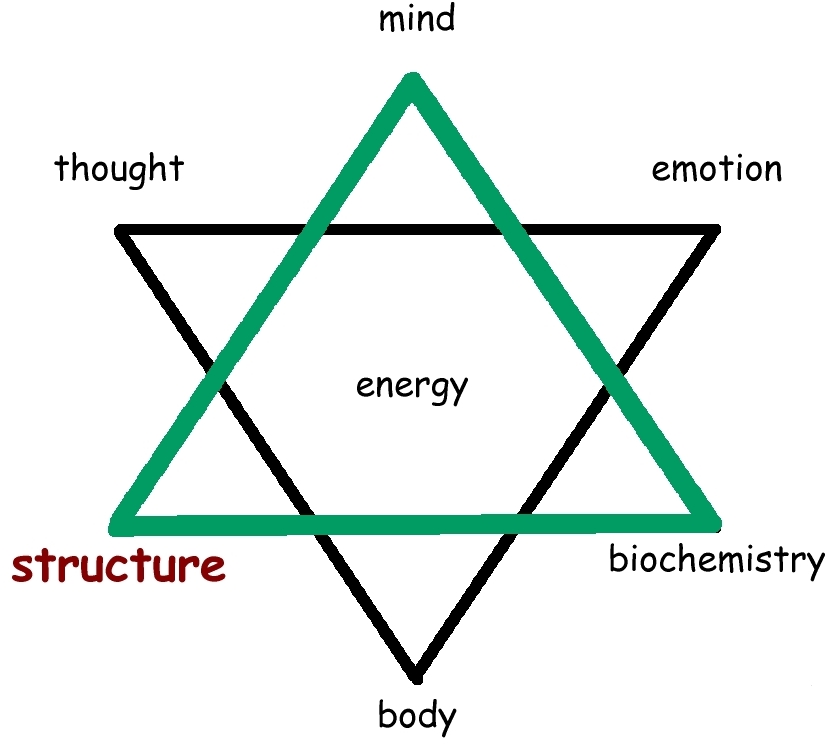
Holistic medicine is characterized by the treatment of a person as a whole. It means that all the parts are related and that they interact. Moreover, it means that they are best addressed with consideration of the other parts.
In this model, let’s look at the green triangle. It considers the interaction of mind (M), structure(S), and biochemistry(B). Here are a few simplistic considerations in the holistic model:
- Any counselor (M) will tell you that there are postures(S) of anger and sadness. They will also tell you that your state of mind impacts your immune system(B).
- Pharmacologists and nutritionists(B) will assert that biochemistry plays a big part in muscle tone and bone structure(S). Also, biochemistry affects your attention, alertness, and mood(M).
- Bodyworkers(S) see that their clients become less irritable and better regulated (M). Also, tight structures can reduce blood flow and impact the delivery of nutrients(B).
Holistic to Integrative
Integrated Approaches vs.
Integrative Approaches
Integrated therapy approaches use techniques that work well together. For example, Hot stones relax muscles after intense work. Stretching evens out tissue after key trigger points are released. Glides warm the tissues to prepare for deeper kneading work. Each technique works with the other technique for a better result.
Integrative bodywork understands how one structure governs other structures. It asks the questions like:
- What catalyst will allow the body to fix the problem at hand?
Where is the central problem that perpetuates the greater pattern? - What makes the system better at self-correcting?
Governors vs. Ancillary Components
It’s Like This
Let’s take a simple analogy. I own an old house. One day, the door hinges were squeaking so I oiled them. Later, the latch wasn’t closing easily so I adjusted the latch. Some time passed and the hinges are squeaking again but, now, the door is rubbing the frame. This time, I went to the basement and found that a support post was rotting. This is causing the floor above to shift. So, I fix the post. The floor moved a tiny bit, less than an inch. But now, the door frame is working better. The hinges have quit binding and squeaking. The door doesn’t rub on the frame and the latch works perfectly. Best of all, I didn’t need to fix them again.
Fixing the post was the integrative solution. By changing a governing piece, all the ancillary pieces fixed themselves. The problem stopped and actually reversed the deteriorating condition of the other parts of the pattern.
Integrative Bodywork does more
than address symptomatic problems.
Integrative Bodywork addresses the governor
that influences the ancillary components
so that they self-correct.
Integrative Bodywork Case
Let’s look at a clinical example. Last year, I had a client who had disc compression in his lower cervical vertebrae. I worked on him for a few sessions, and he improved. But the problem kept returning. We added some stretches for self-care. He took supplements that help to reduce inflammation. The approach was well integrated. The approach was holistic. Still, the condition improved but was not resolving. This is an indicator that the problem is accessory in a greater pattern and governed by another problem.
We discussed the pros and cons and changed the approach. I worked on his cranial base for a few sessions. Then, I sent him for precise upper cervical work to the DC in my office who only adjusts atlases. He does it with a feather-light touch. The before and after x-rays of the lower cervical vertebrae were notably different. The disc spaces were now opened from C4-T1 where before they had been closed. The client’s Forward-Head Posture improved dramatically, and the nerve pain in his arms went away. After his second visit, the client’s atlas stabilized.
Years of experience with upper cervical chiropractors told me that the cranial work was responsible for the atlas’ quick stabilization. The cranial work governed the atlas. The atlas governed the lower cervical vertebrae. The lower cervical vertebrae governed the arm pain. This is how the Integrative Model works.
More Reading on Integrative Bodywork
Here’s another great example of Integrative Bodywork. Read this post about a golfer with shoulder problems that were solved by Integrative Craniosacral.
Integrative CranioMuscular Case
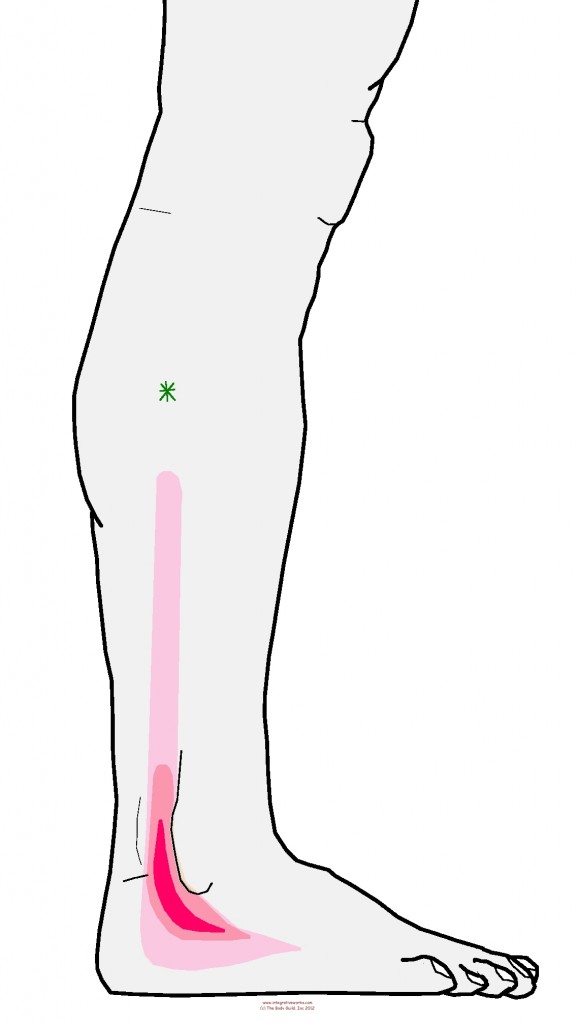
I love this idea. Let’s talk about a common problem.
People complain of pain that makes their ankle buckle to the side. This is a problem when wearing heels or hiking on uneven ground. I talk about the specific trigger point pattern in this post. (which hasn’t been updated to the new format yet… sorry) There is a trigger point in the peroneus longus that creates pain around the back of the ankle and instability.
This ankle problem is part of a much larger pattern in the body. Let’s take a look at the larger pattern.
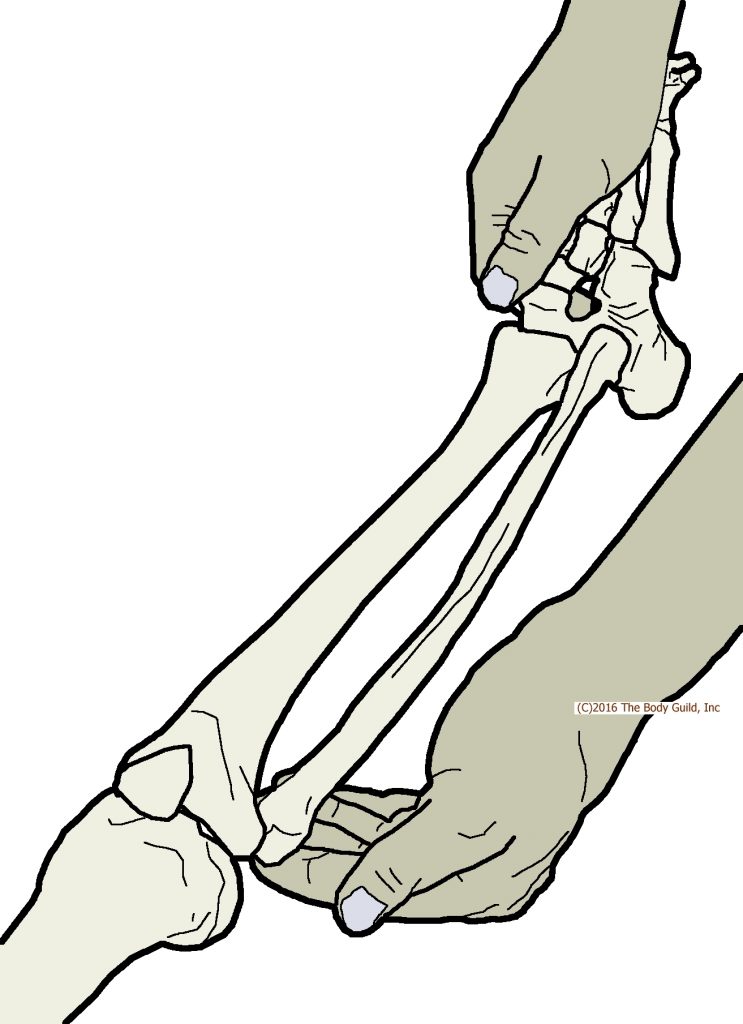
The Local Governor
If you go for a foot massage, you probably know that there is a tender knot in the bottom of the foot, just behind the ball of the foot. It is almost always bigger and more tender on the right. I’ll talk about why in another post.
This is the trigger point at the attachment of the peroneus longus muscle. That muscle runs down the side of the leg, hooks around the outside of the foot, and attaches in the front of the arch. It attaches right where that tender spot is.
This picture is from one of my manuals. It shows the technique for releasing that tender knot in the bottom of the foot. Also, it releases the trigger point on the side of the calf that causes that pain around the back of the ankle and instability. The trigger points release when the joint at the fibular head releases. You can feel the swollen knot in the bottom of the foot diminish when the fibular head slides down.
In other words, the joint between the tibia and fibula governs the trigger point in the peroneus longus. When the joint is freed, the trigger point releases, and the swollen, tender nodule dissipates. Better tone returns to the peroneus longus, and the ankle becomes more stable.
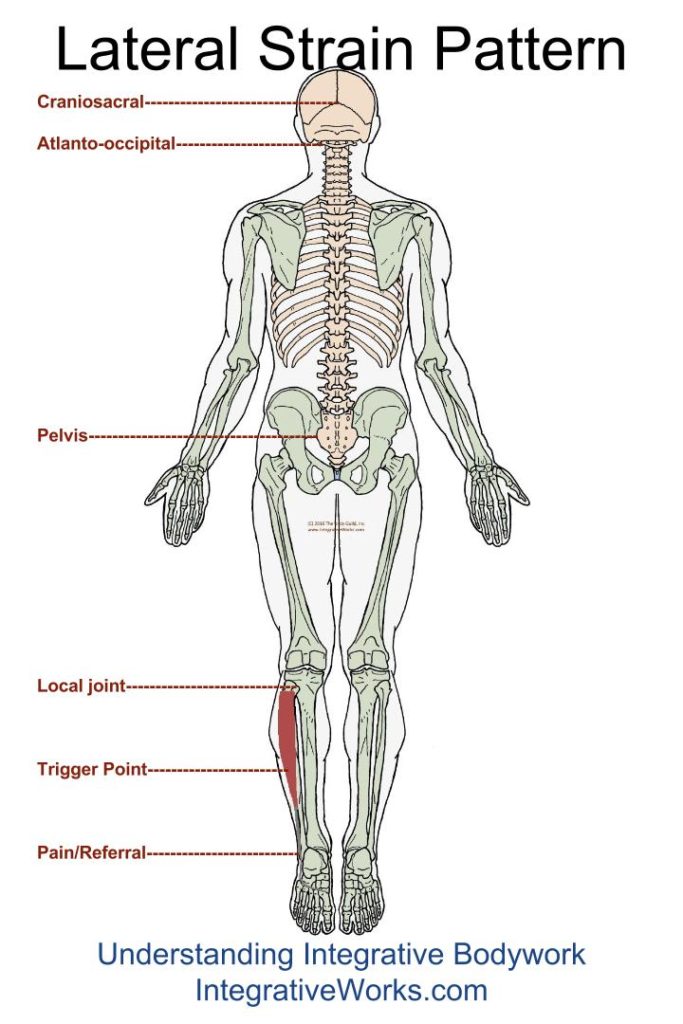
A Chain of Governors and Ancillary Components
Let’s continue without making an exhausting post about the details of every technique.
The person has an unstable ankle and pain. The unstable ankle is associated with a trigger point in the peroneus longus. A binding tibia/fibula joint perpetuates the trigger point. An anterior shear of the sacroiliac joint of the pelvis perpetuates the tibia/fibular bind. Shearing in the atlantooccipital joint perpetuates the pelvic shear. A sphenobasilar lateral strain pattern in the cranium perpetuates the pelvic shear.
I’ve seen this problem many times each year over the past 25 years. I can offer relief by working the foot or pelvis. However, lasting corrections consistently come when I release the governing cranial patterns first. Afterward, the other releases are quicker, easier, longer-lasting, and, often, not even needed.
Symptomatic approaches
focus on fixing the problems
closer to the complaint.
Integrative approaches
focus on fixing problems
that govern symptomatic problems.
This creates a body
that becomes capable
of self-correcting
those symptomatic problems.
Self-Correcting for Quality of Life
Take a look at this case. This client has gotten Integrative Bodywork for years. Not because he has a lot of pain, but because it improves the quality of his life. It maintains a body that is good at fixing itself.
I love Integrative Bodywork.
Support Integrative Works to
stay independent
and produce great content.
You can subscribe to our community on Patreon. You will get links to free content and access to exclusive content not seen on this site. In addition, we will be posting anatomy illustrations, treatment notes, and sections from our manuals not found on this site. Thank you so much for being so supportive.
Cranio Cradle Cup
This mug has classic, colorful illustrations of the craniosacral system and vault hold #3. It makes a great gift and conversation piece.
Tony Preston has a practice in Atlanta, Georgia, where he sees clients. He has written materials and instructed classes since the mid-90s. This includes anatomy, trigger points, cranial, and neuromuscular.
Question? Comment? Typo?
integrativeworks@gmail.com
Follow us on Instagram

*This site is undergoing significant changes. We are reformatting and expanding the posts to make them easier to read. The result will also be more accessible and include more patterns with better self-care. Meanwhile, there may be formatting, content presentation, and readability inconsistencies. Until we get older posts updated, please excuse our mess.

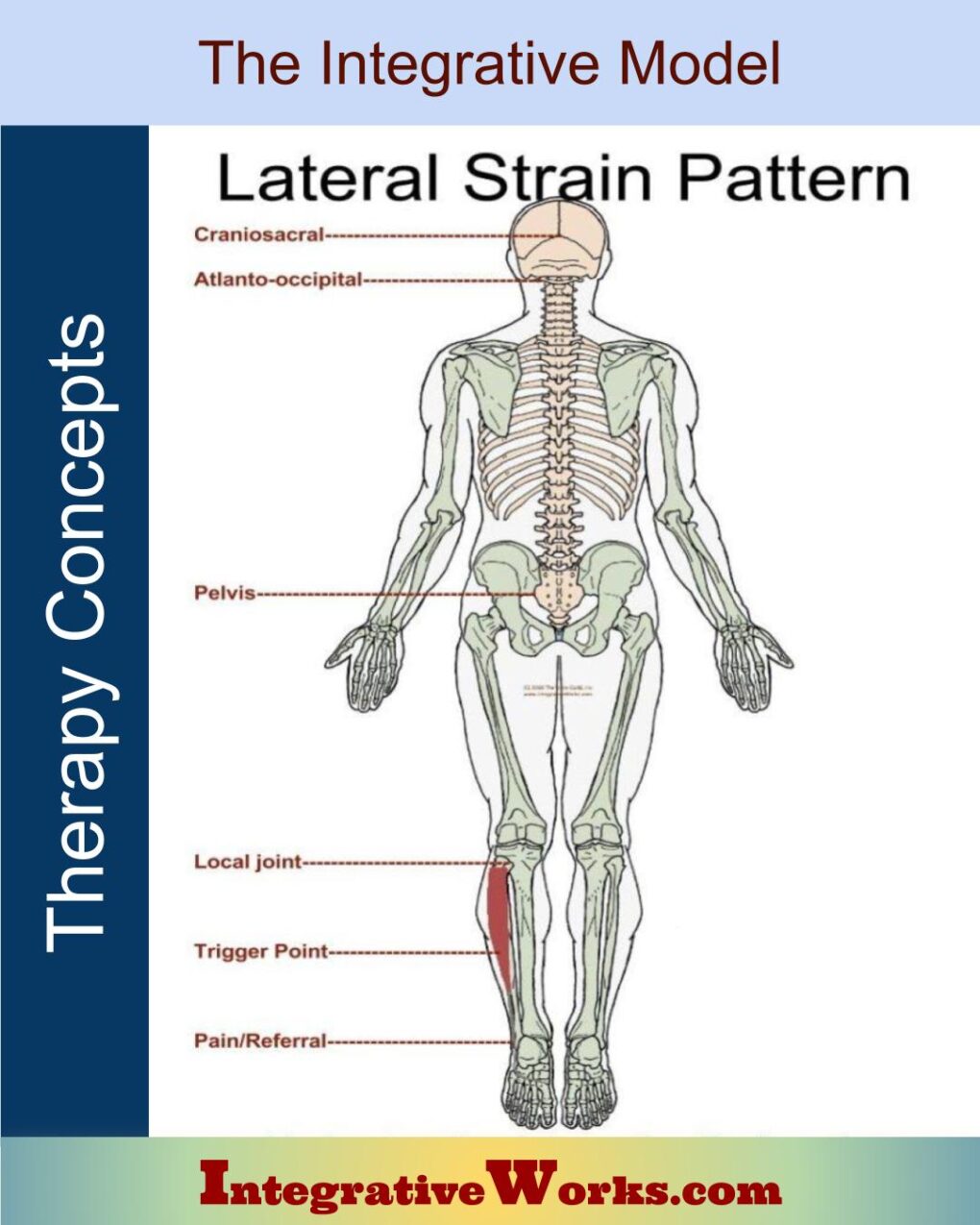

Comments are closed.